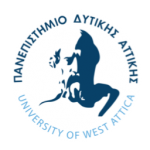2015 |
Kouis, D; Vassilakaki, E; Vraimaki, E; Cheilakou, E; Saint, A C; Sakkopoulos, E; Viennas, E; Pikoulis, E -V; Nodarakis, N; Achilleopoulos, N; Zervos, S; Giannakopoulos, G; Kyriaki-Manessi, D; Tsakalidis, A; Koui, M Standardizing NDT& E Techniques and conservation metadata for cultural artifacts Book 2015, ISSN: 18650929. Abstract | Links | BibTeX | Tags: CIDOC, Conservation, Cultural objects, DOC-Culture, Dublin core, KNN classifier, Metadata, Non-destructive testing techniques @book{Kouis2015,textcopyright Springer International Publishing Switzerland 2015.Conservation activities, before and after decay detection, are considered as a prerequisite for maintaining cultural artifacts in their initial/original form. Taking into account the strict regulations where sampling from art works of great historical value is restricted or in many cases prohibited, the application of Non- Destructive Testing techniques (NDTs) during the conservation or even decay detection is highly appreciated by conservators. Non-destructive examination include the employment of multiple analysis approaches and techniques namely Infrared Thermography (IRT), Ultrasonics (US), Ground Penetrating Radar (GPR), VIS–NIR Fiber Optics Diffuse Reflectance Spectroscopy (FORS), portable X-Ray Fluorescence (XRF), Environmental Scanning Electron Microscopy with Energy Dispersive X-Ray Analysis (ESEM-EDX), Attenuated Total Reflectance- Fourier Transform Infrared Spectroscopy (ATR-FTIR) and micro-Raman Spectroscopy. These produce a huge amount of data, in different formats, such as text, numerical sets and visual objects (i.e. images, thermograms, radargrams, spectral data, graphs, etc). Moreover, conservation documentation presents major drawbacks, as fragmentation and incomplete description of the related information is usually the case. Assigning conservation data to the objects' metadata collection is very rare and not yet standardized. The Doc-Culture Project aims to provide solutions for the NDT application methodologies, analysis and process along with their output data and all related conservation documentation. The preliminary results are discussed in this paper. |
Indicative Publications
2015 |
Standardizing NDT& E Techniques and conservation metadata for cultural artifacts Book 2015, ISSN: 18650929. |

